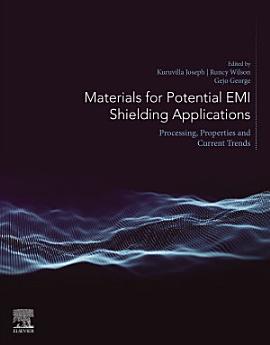Materials for Potential EMI Shielding Applications: Processing, Properties and Current Trends
About this ebook
About the author
Kuruvilla Joseph is a Professor in the Department of Chemistry at the Indian Institute of Space Science and Technology, Thiruvananthapuram, India. His research areas includes nanomaterials and nanocomposites, polymer blends and composites, synthesis of polymers from natural resources, green materials and biocomposites, aging and degradation, and development of biosensors.
Dr. Wilson is an assistant professor in the Department of Chemistry, St. Cyril’s College, Kerala, India. He obtained his PhD in Chemistry from Mahatma Gandhi University, Kottayam, India. He has written several publications in international journals and conference proceedings. He has also co-edited two books one titled “Transport Properties of Polymeric Membranes and the other titled “Materials for Potential EMI Shielding Applications: Processing, Properties and Current Trends published by Elsevier. He has also conducted research work at Katholieke Universiteit Leuven, Belgium. Dr. Runcy has also almost two years of industrial experience as a junior scientist at the Corporate R&D Centre, HLL Lifecare Limited, a Government of India Enterprise, in the area of synthesis of green polymers. His current research interests include polymer nanocomposites for membrane applications, synthesis of biodegradable polymers for medical applications, and development of high quality EMI shielding material.
Dr. George obtained his PhD in Chemistry from Kalasalingam University, Tamil Nadu, India in 2014, specializing in the area of commingled natural fiber composites. He published several articles in high-impact journals (Composite Part A, Composite Part B, Carbon, Scientific Reports etc.) and wrote chapters for several books. He has two and a half years of experience as a junior scientist at the Corporate R&D Centre, HLL Lifecare Limited, a Government of India Enterprise, in the area of graphene/natural rubber latex nanocomposites for contraceptive applications. Dr. George also completed two years of post-doctoral research in the area of EMI shielding materials during his tenure as UGC-DSKPDF at School of Pure and Applied Physics, Mahatma Gandhi University, Kerala, India. He was also a post-doctoral researcher at Division of Materials Science, Luleå University of Technology, Luleå, Sweden for 1 year and 8 months and worked in the area of high quality carbon nanomaterials from biomass. He has also co-edited a book titled “Materials for Potential EMI Shielding Applications: Processing, Properties and Current Trends published by Elsevier. His present research interests include natural fiber-based composites, carbon nanocomposites for EMI shielding applications, graphene-based composites, and biomass/biochar to advanced carbon nanomaterials.




